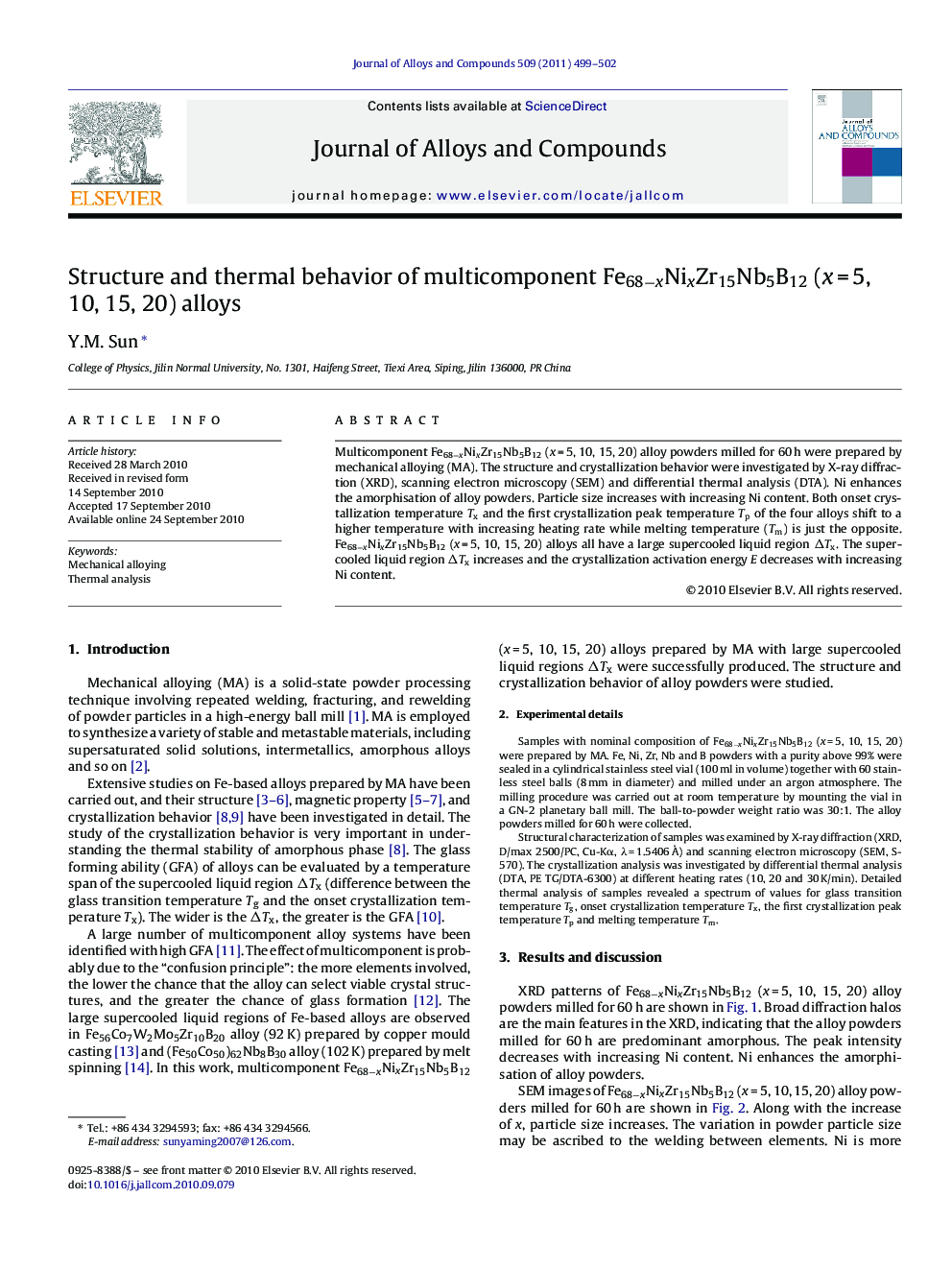| Article ID | Journal | Published Year | Pages | File Type |
|---|---|---|---|---|
| 1619201 | Journal of Alloys and Compounds | 2011 | 4 Pages |
Multicomponent Fe68−xNixZr15Nb5B12 (x = 5, 10, 15, 20) alloy powders milled for 60 h were prepared by mechanical alloying (MA). The structure and crystallization behavior were investigated by X-ray diffraction (XRD), scanning electron microscopy (SEM) and differential thermal analysis (DTA). Ni enhances the amorphisation of alloy powders. Particle size increases with increasing Ni content. Both onset crystallization temperature Tx and the first crystallization peak temperature Tp of the four alloys shift to a higher temperature with increasing heating rate while melting temperature (Tm) is just the opposite. Fe68−xNixZr15Nb5B12 (x = 5, 10, 15, 20) alloys all have a large supercooled liquid region ΔTx. The supercooled liquid region ΔTx increases and the crystallization activation energy E decreases with increasing Ni content.
Research highlights▶ Extensive studies on Fe-based alloys prepared by MA have been carried out, and their structure, magnetic property, and crystallization behavior have been investigated in detail. The study of the crystallization behavior is very important in understanding the thermal stability of the amorphous phase. The glass forming ability (GFA) of alloys can be evaluated by a temperature span of the supercooled liquid region ΔTx. In this work, multicomponent Fe68−xNixZr15Nb5B12 (x = 5, 10, 15, 20) alloys prepared by MA with large supercooled liquid regions ΔTx were successfully produced. The structure and crystallization behavior of alloy powders were studied. ▶ Based on the study of research results of Fe-based alloys prepared by mechanical alloying and the results analysis of our experiment, the highlights of our text are summarized as follows: (i) Particle size increases with increasing Ni content, which is due to the increase of the heat of mixing; (ii) Both onset crystallization temperature Tx and the first crystallization peak temperature Tp shift to a higher temperature with increasing heating rate while melting temperature (Tm) is just the opposite; (iii) Fe68−xNixZr15Nb5B12 (x = 5, 10, 15, 20) alloys all have a large supercooled liquid region ΔTx; (IV) The crystallization activation energy E of Fe68−xNixZr15Nb5B12 (x = 5, 10, 15, 20) alloys decreases with increasing Ni content. The increase of Ni content weakens the thermal stability.
